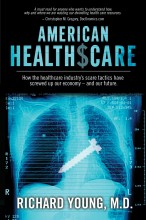Have you ever heard of the butterfly effect? It’s a classic concept in complex adaptive system theory. The idea is that the energy generated from a butterfly flapping its wings, added to another burst of energy, and so on, and so on, and so on, ultimately leads to a hurricane half a globe away. This might seem fanciful to many people.
Now imagine a bat interacts with another animal who interacts with another human in an illegal animal market in a city in China, that leads to a city being shut down, that leads to State misinformation, that leads to hundreds to thousands of people dying in Italy and Iran, that leads to a collapse of the world economy, at least for the time being. Maybe the butterfly effect should be renamed the Covid-19 effect so people can visualize it better in the future.
In complex adaptive system terminology, this is a great example of a nonlinear, emerging phenomenon that progressed in an unpredictable way. How many other people around the globe have gotten close to a bat? No one could have known that the Wuhan person interacting with a Wuhan bat would be the first domino to fall, and would lead to the catastrophe this has become.
Other complex adaptive system characteristics are being borne out. Complex systems can’t be controlled from the top, yet the top of a system can still have some influence. Units in smaller systems interact with larger units of systems. In the Covid-19 outbreak, the smaller units, cities and states for example, reacted more aggressively and decisively than the largest units, countries.
Complex adaptive systems are the most resilient when they are not super lean. If a Toyota-lean organized factory experienced a disruption in a part delivered from a supplier, it could shut down the entire factory. Eventually, super efficient systems fail within complex systems. Ask the CEOs of Kmart and Sears how their just-in-time supply lines worked out for them.
In contrast, universities are recognized as complex adaptive systems that have a little slack built into their system and are built to learn and evolve over time. Universities are examples of complex systems that have lasted over a thousand years in some cases. In the Covid-19 crisis, when faced with a unpredictable threat, they simply shut their doors, extended spring breaks, and instituted mandatory distance learning. Each university is a micro-climate that evolves unique to the interactions and local learnings of its component agents. Over the long run, universities will continue to survive just fine.
Now, healthcare systems that were built to be super lean and efficient are struggling. What does the system do when N95 masks run out? What if it runs out of ventilators? Hopefully, healthcare system leaders will demonstrate some gut-level understanding of complex systems and continue to tell the people who work below them to innovate, bend some rules, and develop their own local solutions.
And when Covid-19 finally sputters out, however long that will take no one knows, let’s hope that the healthcare system leaders will learn more about complex adaptive systems. When they’re out of crisis mode, they can then turn their attention to what should be the next casualty of Covid-19: all the meaningless primary care “population health” metrics, MIPS, MACRA, and so on and so on.
Even in a crisis, a boy can still dream.



Really enjoyed this column. I 100% share your wishes about ‘meaningless primary care “population health” metrics, MIPS, MACRA, and so on and so on.’
Also enjoyed what you said about it’s not good for an organization to be too super-lean. Because it makes most money, this has been the goal for decades now, but a very destructive one. You don’t want workers sitting around most days, but you do want enough slack in the system that there are enough workers to accommodate seasonal highs and special situations – this means having SOME slack in the system on normal days. That slack can be useful in affording sufficient leisure during non-peak times to make improvements and time for reflection; and to have a humane working environment without burnout.
A too-lean system is a recipe for disaster under stress, burnout, demotivation, and mistakes. But it’s what we’ve mostly go.
I’ve been known to say “slack time is an institution’s seed corn.”
“what should be the next casualty of Covid-19: all the meaningless primary care “population health” metrics, MIPS, MACRA, and so on and so on”
I’ve been having exactly the same dream.
Do you think this will bring the AAFP to their senses and finally convince them that doctors should spend their time doctoring? Or are they too far done the rabbit hole?
Large organizations love standardization across the board and focus on a few things important at the organization levels to those at the top of the organization. I like your points about smaller units (countries) reacted more decisively. It must be frustrating for some at health care organizations when they have to work with physicians not under their direct control – think surgeons who practice at different organizations where standardized order sets or patient education materials or scheduling systems run into resistance.
The efficiency from standardization is often not the only metric that matters. We heard so much of lean and six sigma that was “invented” in GE to achieve efficiency, and we should remember to look up where GE is now. If an organization is perfectly tuned for efficiency with absolutely no waste, should we say the organization is about to achieve its end? A complex adaptive system is probably never perfect in any simple metrics.
I vote to change “butterfly effect” to COVID19 effect. It surely drives the point of complex systems home to many of us. Well done, Dr. Young!